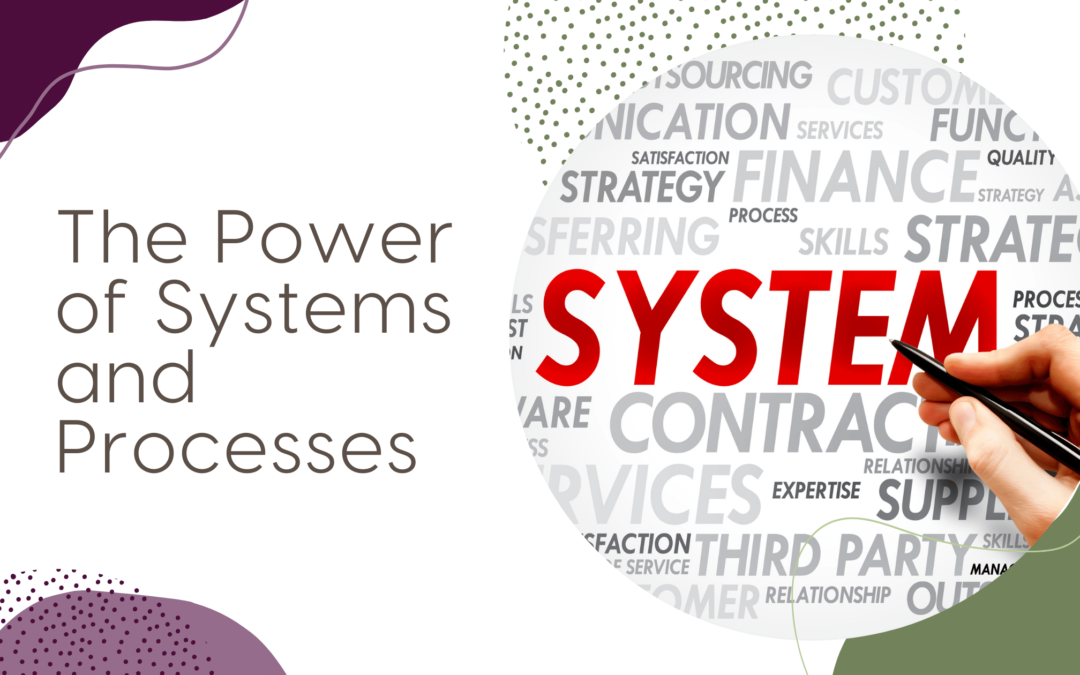The power of systems and processes comes into play when running and owning a business. efficiency is key.
Yet, many entrepreneurs find themselves bogged down by manual tasks, inefficient workflows, and ad-hoc processes that hinder productivity and growth. That’s where the power of systems and processes comes into play.
By implementing streamlined systems and processes, businesses can enhance efficiency, minimize errors, and maximize profitability. In this article, we’ll delve into the importance of systems and processes in business and how they can revolutionize your operations.
Systems and processes form the backbone of any successful business. They provide structure, consistency, and clarity, enabling teams to work cohesively towards common goals. Without well-defined systems and processes in place, businesses risk chaos, confusion, and inefficiency. By establishing clear workflows, automating repetitive tasks, and standardizing procedures, businesses can optimize their operations and achieve greater success.
Key Components of Effective Systems and Processes
Creating effective systems and processes requires careful planning, documentation, and implementation. Here are some key components to consider:
1. Workflow Analysis
Start by analyzing your current workflows and identifying areas for improvement. Look for bottlenecks, redundancies, and inefficiencies that can be addressed through automation or optimization.
2. Standard Operating Procedures (SOPs)
Document standard operating procedures for key business processes, such as sales, marketing, finance, and customer service. SOPs provide step-by-step instructions for completing tasks consistently and accurately.
3. Automation Tools
Leverage technology to automate repetitive tasks and streamline workflows. Invest in tools and software solutions that can automate data entry, scheduling, invoicing, and other manual processes.
4. Training and Education
Ensure that your team members are adequately trained on the systems and processes relevant to their roles. Provide ongoing training and education to keep them up-to-date on best practices and new developments.
5. Continuous Improvement
Regularly review and refine your systems and processes to adapt to changing business needs and market conditions. Solicit feedback from team members and stakeholders to identify areas for improvement and innovation.
Benefits of Streamlined Systems and Processes
Implementing streamlined systems and processes can yield a wide range of benefits for businesses, including:

Increased Efficiency: Streamlined processes reduce the time and effort required to complete tasks, leading to improved productivity and efficiency.
Reduced Errors and Rework: Clear workflows and standardized procedures minimize the risk of errors and rework, resulting in higher-quality outputs and satisfied customers
Enhanced Scalability: Scalable systems and processes allow businesses to handle increased workloads and expand operations without sacrificing quality or performance.
Improved Decision-Making: Access to accurate, timely data enables informed decision-making and strategic planning, driving business growth and competitiveness.
Greater Employee Satisfaction: Streamlined processes reduce frustration and stress for employees, leading to higher levels of job satisfaction and retention.
Having an business means efficiency is essential for success. By using the power of systems and processes, businesses can optimize their operations, minimize waste, and achieve greater profitability. From workflow analysis and SOP documentation to automation tools and continuous improvement initiatives, there are numerous strategies for streamlining business processes. By investing in streamlined systems and processes, businesses can position themselves for long-term success and sustainable growth in the ever-evolving marketplace.

